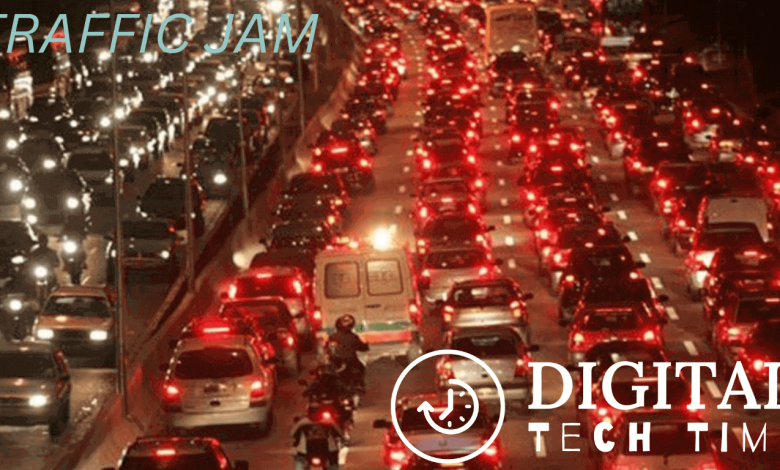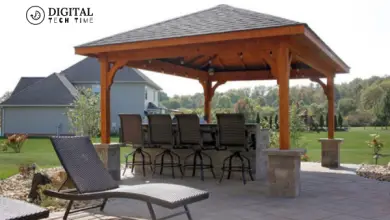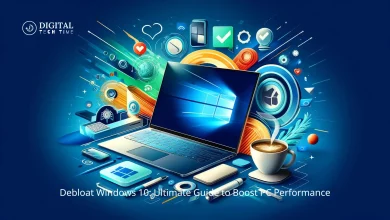The Comprehensive Guide to Understanding Traffic Jams: Causes, Effects, Solutions, and Tips
The Comprehensive Guide to Understanding Traffic Jams: Causes, Effects, Solutions, and Tips

Traffic jams are a ubiquitous part of modern life, affecting almost every individual who uses roads for commuting. Whether you are driving to work, taking your kids to school, or simply running errands, the chances are high that you will encounter a traffic jam at some point. But what causes these jams? What are their effects on our lives and the environment? And most importantly, what can be done to alleviate this problem? This comprehensive guide aims to answer these questions and more, providing an in-depth look at the phenomenon of traffic jams.
Causes of Traffic Jams
High Vehicle Density: One of the primary causes of traffic jams is the sheer number of vehicles on the road. As urban areas grow and the population increases, so does the number of cars, trucks, and motorcycles. High vehicle density leads to slower speeds and longer travel times, as each vehicle takes up space that could otherwise be used to facilitate the flow of traffic. The problem is exacerbated during peak hours when everyone is either going to work or returning home.
- Urbanization: Rapid urbanization leads to increased vehicle ownership.
- Affordability: Easier finance options make it simpler for people to own cars.
- Lack of Public Transport: Inadequate public transport forces people to rely on personal vehicles.
Road Construction: Another significant cause of traffic jams is road construction. While the intent behind road construction is usually to improve the infrastructure and make commuting easier, the process itself can create bottlenecks. Lanes are often closed or narrowed, forcing vehicles to merge, which slows down traffic considerably.
- Poor Planning: Lack of proper planning can extend construction timelines, exacerbating the problem.
- Inadequate Signage: Poorly placed or missing signs can confuse drivers and contribute to delays.
- Weather Conditions: Adverse weather can halt construction, prolonging the period during which the road is unusable.
Accidents: Road accidents are another common cause of traffic jams. Even a minor fender-bender can result in significant delays as vehicles slow down to navigate around the accident scene. In more severe cases, lanes or entire roads may be closed, causing massive backups.
- Rubbernecking: The act of slowing down to look at accidents contributes to further delays.
- Emergency Response: The time it takes for emergency services to clear an accident can vary, affecting the length of the jam.
- Secondary Accidents: Initial accidents often lead to secondary collisions, compounding the problem.
Traffic Signals: Traffic signals are essential for regulating the flow of traffic at intersections, but poorly timed or malfunctioning signals can disrupt this flow. When signals are not synchronized or set for too long or too short a duration, it can lead to unnecessary stopping and starting, contributing to traffic jams.
- Outdated Systems: Many cities still rely on old traffic management systems that are not optimized for current traffic conditions.
- Human Error: Sometimes, traffic signals are manually controlled, leading to errors and inefficiencies.
- Power Outages: Loss of electricity can render traffic signals useless, causing chaos at intersections.
Pedestrian Crossings: High pedestrian activity, especially in busy urban areas, can also slow down traffic. Each time a vehicle stops to allow pedestrians to cross, it creates a ripple effect that slows down the vehicles behind it.
- Unmarked Crossings: Lack of proper pedestrian crossings can lead to unpredictable behaviour, affecting traffic flow.
- High-Foot Traffic Areas: Places like schools, malls, and tourist attractions often have high pedestrian activity, contributing to delays.
Special Events: Concerts, sports events, conventions, and other large gatherings can cause temporary spikes in traffic, leading to jams. These events often attract thousands of people, overwhelming the existing road infrastructure.
- Inadequate Parking: Lack of sufficient parking spaces can lead people to park on the streets, narrowing lanes and causing delays.
- Traffic Diversions: Sometimes roads are closed for events, forcing traffic onto alternative routes that may not be equipped to handle the increased load.
Effects of Traffic Jams
Increased Travel Time: The most immediate and noticeable effect of traffic jams is the increase in travel time. What should be a 20-minute commute can easily turn into an hour-long ordeal during peak traffic hours. This not only wastes time but also disrupts schedules and leads to missed opportunities.
- Missed Appointments: Delays can result in missed doctor’s appointments, job interviews, and other important engagements.
- Reduced Productivity: Time spent in traffic is time that could be used more productively elsewhere.
- Family Time: Longer commutes mean less time spent with family, affecting relationships and quality of life.
Fuel Consumption: Cars consume more fuel when idling or moving at slow speeds, which is often the case in traffic jams. This increased fuel consumption has both economic and environmental implications.
- Economic Cost: The cost of extra fuel can add up over time, impacting household budgets.
- Supply and Demand: Increased fuel consumption can affect fuel supply levels and even contribute to price hikes.
- Engine Wear and Tear: Constant stopping and starting in traffic can lead to faster wear and tear on vehicle engines.
Air Pollution: More cars idling and consuming fuel also means increased emissions. These emissions contribute to air pollution, which has a range of negative health effects.
- Respiratory Issues: Polluted air can exacerbate asthma and other respiratory conditions.
- Environmental Impact: Emissions contribute to global warming and climate change.
- Visibility: High levels of pollution can reduce visibility, further complicating driving conditions.
Stress and Road Rage: Being stuck in traffic can be a stressful experience, leading to heightened tension and frustration. In extreme cases, this can escalate into road rage, a dangerous behaviour that puts everyone on the road at risk.
- Mental Health: Chronic stress from regular exposure to traffic jams can have long-term mental health implications.
- Aggressive Driving: Stress can lead to aggressive driving behaviours like tailgating, speeding, and honking.
- Accidents: Road rage can lead to confrontations and accidents, further exacerbating traffic problems.
Economic Impact: The cumulative effect of increased travel time, fuel consumption, and stress has a broader economic impact. Businesses experience delays in goods transportation, employees arrive late to work, and overall productivity suffers.
- Logistics: Delays in the transportation of goods can disrupt supply chains.
- Employee Productivity: Tardiness and stress can affect employee performance and job satisfaction.
- Healthcare Costs: Increased accidents and health issues lead to higher healthcare costs for society.
Solutions to Traffic Jams
Public Transport: One of the most effective ways to reduce traffic is to encourage the use of public transport. Buses, trains, and subways can carry many more people than individual cars, reducing the number of vehicles on the road.
- Infrastructure: Investment in public transport infrastructure is crucial for its success.
- Affordability: Making public transport affordable encourages more people to use it.
- Accessibility: Public transport should be easily accessible to people from all areas, including rural and suburban regions.
Carpooling: Sharing rides can also significantly reduce the number of cars on the road. Carpooling is not only economical but also a more environmentally friendly option.
Sub-points:
- Carpool Lanes: Dedicated lanes for carpoolers can make the option more attractive.
- Ride-sharing apps: Technology can facilitate carpooling through specialized apps.
- Incentives: Employers can offer incentives like free parking spaces for carpoolers.
Traffic Management Systems
Advanced traffic management systems that use real-time data can significantly improve traffic flow. These systems can monitor traffic conditions and adjust signals and speed limits accordingly.
- Smart Traffic Lights: Traffic lights that adapt to real-time conditions can reduce waiting times at intersections.
- Traffic Cameras: Cameras can monitor traffic and provide data for better management.
- Variable Speed Limits: Speed limits that change based on traffic conditions can improve flow and reduce congestion.
Road Expansions
Increasing the number of lanes on existing roads or constructing new roads altogether can help alleviate bottlenecks and improve the flow of traffic. However, this is often a long-term solution that requires significant investment and planning.
- Feasibility Studies: Before expanding roads, comprehensive studies must be conducted to assess the impact on traffic, the environment, and local communities.
- Cost-Benefit Analysis: The economic benefits of road expansion should outweigh the costs for it to be a viable solution.
- Environmental Concerns: Road expansions can lead to habitat destruction and increased pollution, which must be mitigated.
Driver Education
Educating drivers about road etiquette, the importance of following traffic rules, and safe driving techniques can go a long way in reducing traffic jams. Informed drivers are less likely to engage in behaviours that contribute to congestion and accidents.
- Driving Schools: Incorporate traffic management education into driving school curriculums.
- Public Awareness Campaigns: Use media and public platforms to educate people about the importance of responsible driving.
- Law Enforcement: Stricter penalties for traffic violations can act as a deterrent.
Tips for Dealing with Traffic Jams
Plan Ahead: One of the best ways to mitigate the impact of traffic jams is to plan your journey in advance. Check traffic updates and weather conditions before leaving and consider alternative routes.
- Traffic Apps: Utilize apps that offer real-time traffic updates and route suggestions.
- Time Management: Allocate extra time for your journey to account for possible delays.
- Off-Peak Hours: If possible, travel during non-peak hours to avoid congestion.
Leave Early: Giving yourself extra time to reach your destination can reduce the stress associated with being stuck in traffic and the potential consequences of being late.
- Buffer Time: Always include a buffer time in your travel plans, especially for important events like interviews or flights.
- Morning Advantage: Traffic is generally lighter in the early morning, making it a good time to travel for those who have flexibility.
Stay Calm
Keeping your cool in stressful traffic situations is crucial for your safety and that of others on the road. Deep breathing, listening to calming music, or engaging in light conversation can help keep stress levels down.
- Mindfulness: Practicing mindfulness can help you stay focused and calm.
- Avoid Aggression: Aggressive driving is not only dangerous but also contributes to traffic jams.
Use Technology: Modern technology offers various tools to help navigate through traffic. GPS apps provide real-time updates, and some cars come equipped with advanced navigation systems.
- Real-Time Updates: Apps like Google Maps and Waze offer real-time traffic conditions and alternative routes.
- Smart Cars: Newer car models often come with built-in navigation systems that can predict and avoid traffic
Check Out More About Traffic Jams on Wikipedia, and check out more about entering the World’s Latest Update.
Frequently Asked Questions (FAQs) About Traffic Jams
Q1: What are the primary causes of traffic jams?
The primary causes of traffic jams include high vehicle density, road construction, accidents, poorly timed traffic signals, high pedestrian activity, and special events like concerts or sports games.
Q2: How do traffic jams affect fuel consumption?
Answer: Traffic jams lead to increased fuel consumption as cars often idle or move at slow speeds. This not only has economic implications but also contributes to air pollution.
Q3: What are the health impacts of traffic jams?
Traffic jams can lead to increased stress levels, which can have long-term mental health implications. The air pollution caused by idling vehicles can also exacerbate respiratory issues like asthma
Q4: How can public transport help in reducing traffic jams?
Public transport systems like buses, trains, and subways can carry many more people than individual cars, reducing the number of vehicles on the road and thereby alleviating traffic congestion.
Q5: What is carpooling and how does it help?
Carpooling involves sharing a car ride with other people who are traveling in the same direction. It reduces the number of vehicles on the road, making it both an economical and environmentally friendly option.
Q6: Are advanced traffic management systems effective?
Yes, advanced traffic management systems that use real-time data can significantly improve traffic flow by adjusting signals and speed limits based on current conditions.
Q7: What are some tips for dealing with traffic jams?
Planning ahead, leaving early, staying calm, and using technology like GPS apps for real-time updates can help you navigate through traffic more efficiently.
Q8: What are the economic implications of traffic jams?
Traffic jams can have a broad economic impact, affecting logistics, employee productivity, and even increasing healthcare costs due to stress and accidents.
Q9: Is road expansion a viable solution for traffic jams?
While road expansion can alleviate bottlenecks, it is often a long-term solution that requires significant investment and planning. Environmental impacts must also be considered.
Q10: How can driver education help in reducing traffic jams?
Educated drivers are less likely to engage in behaviors that contribute to traffic jams, such as tailgating, speeding, and ignoring traffic signals. Driver education can promote responsible driving and improve overall traffic flow.
In Conclusion: Traffic jams are an unfortunate but often unavoidable aspect of modern life. Understanding their causes and effects can help us find effective solutions. While there is no one-size-fits-all answer, a combination of improved infrastructure, better traffic management systems, and responsible driving can go a long way in alleviating this issue. By taking a proactive approach and making informed choices, we can all contribute to a smoother, less stressful commuting experience.
This concludes the in-depth article on traffic jams, covering causes, effects, solutions, and tips. The article aims to provide a comprehensive understanding of the issue, offering actionable advice for both policymakers and everyday commuters. Thank you for reading, and safe travels!





